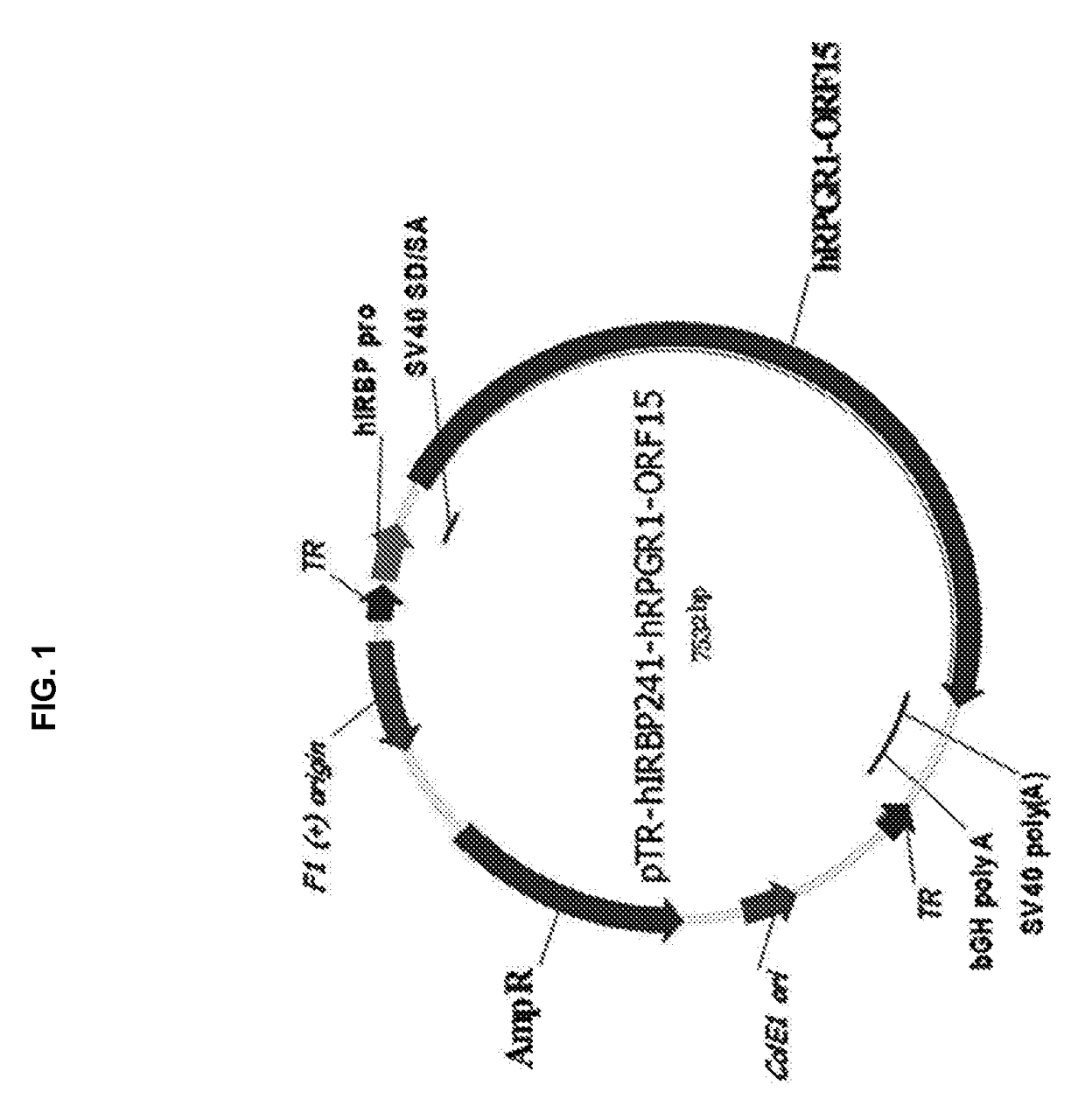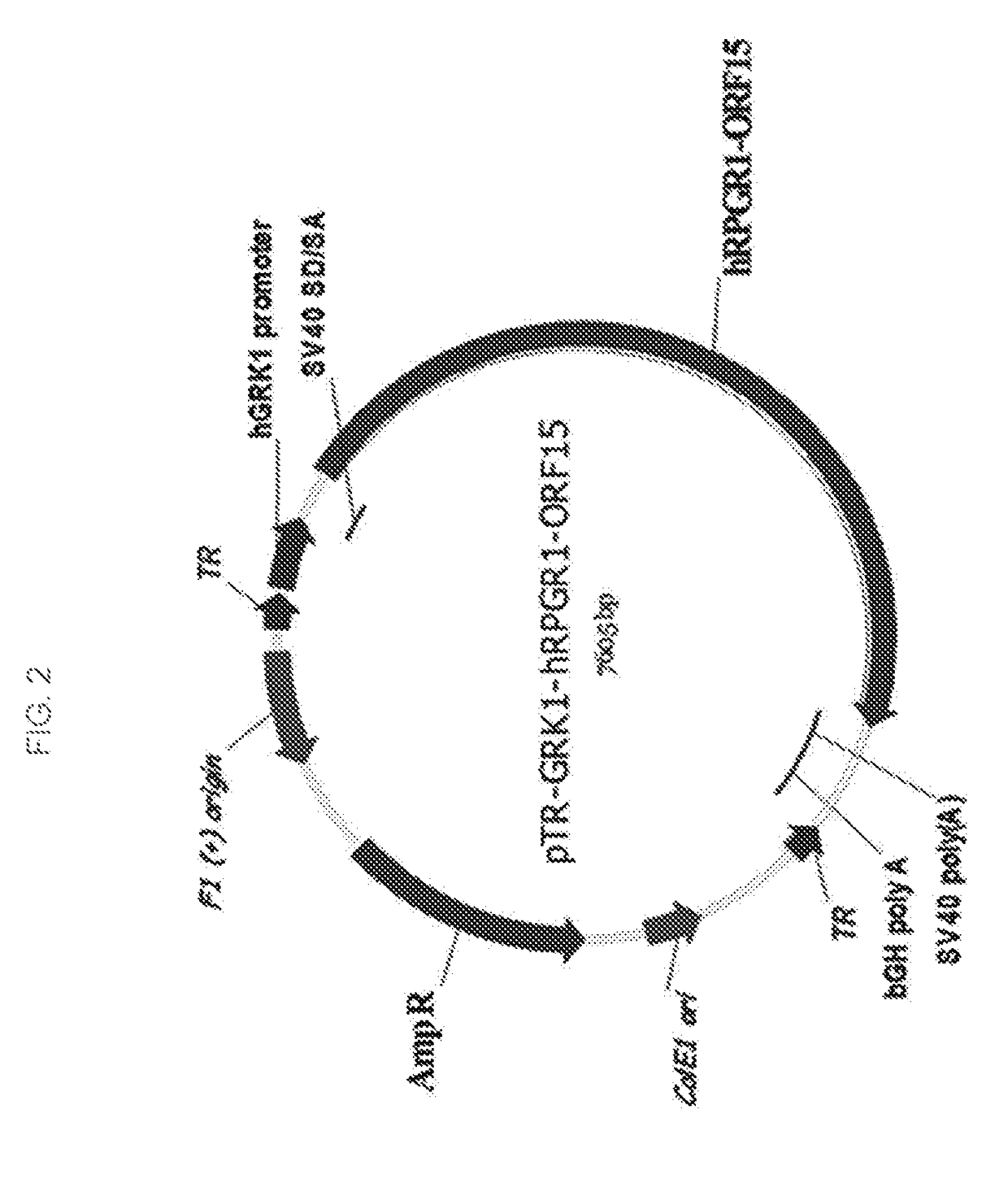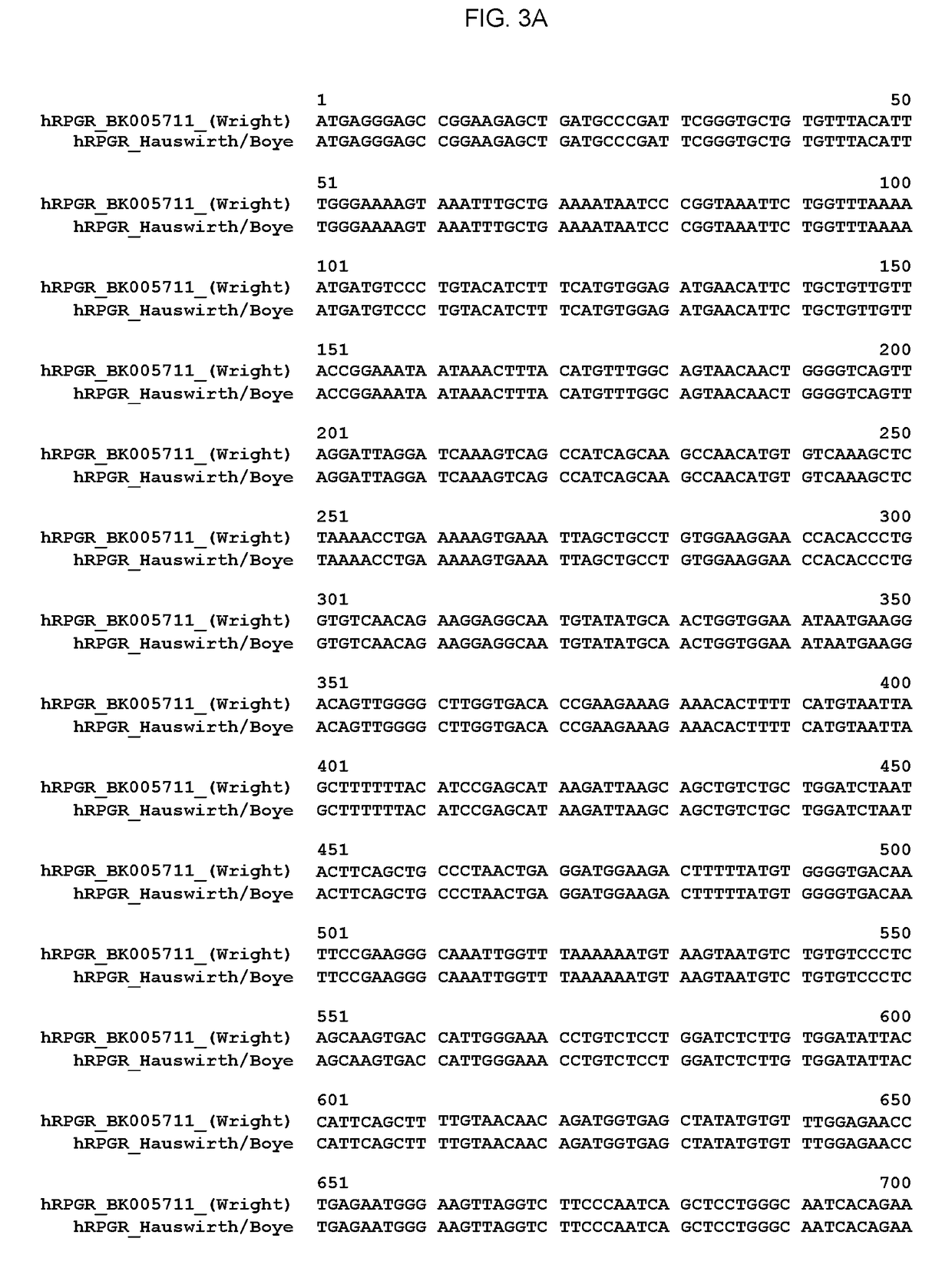Aav-mediated gene therapy for rpgr x-linked retinal degeneration
a gene therapy and xlinked retinal technology, applied in the field of aavmediated gene therapy for rpgr xlinked retinal degeneration, can solve the problems of slow progress in unraveling the molecular mechanisms that lead from pr degeneration to mutation, and no successful treatment for xlrp is currently available to human patients suffering from this disease, so as to prevent, arrest or improve vision loss
- Summary
- Abstract
- Description
- Claims
- Application Information
AI Technical Summary
Benefits of technology
Problems solved by technology
Method used
Image
Examples
example 1
and Methods
[0076]a. Human Subjects and Retinal Cross-Sectional Imaging
[0077]Patients with XLRP and molecularly confirmed RPGRORF15 mutations were included in this study. Informed consent was obtained. Procedures followed the Declaration of Helsinki guidelines and were approved by the institutional review board. Retinal cross-sectional imaging was obtained with spectral-domain optical coherence tomography (SD-OCT, RTVue-100; Optovue Inc., Fremont, Calif.). Recording and analysis techniques were published previously.
[0078]b. Animals
[0079]To define the structural and functional consequences of XLPRA1 and XLPRA2 disease and set the stage for treatment and outcome assessment, we used wild type (n=17, ages 7-416 wks), XLPRA1 (n=9, ages 7-156 wks) and XLPRA2 (n=6, ages 8-144 wks) dogs for non-invasive imaging and ERG studies. For gene therapy, crossbred affected dogs were used (Tables 1 & 2 below). All procedures involving animals were performed in compliance with the ARVO Statement for th...
example 2
5 Mutations Lead to Photoreceptor Degeneration in Humans and Dogs
[0094]Topography of photoreceptors can be mapped across the retina of patients with RPGR-XLRP by measuring the thickness of the outer (photoreceptor) nuclear layer (ONL) using cross-sectional OCT retinal imaging. As shown in FIG. 1A of Beltran W A, et al, (2012 January) Proc Natl Acad Sci USA, 109(6):2132-7 (Beltran 2012), which is reproduced as FIG. 1A of U.S. Provisional Patent Application No. 61 / 670,355, in normal eyes (inset), ONL thickness peaks centrally and declines with distance from the fovea. XLRP patients with ORF15 mutations can have different disease patterns. A common pattern shows dramatic photoreceptor losses with relatively greater retention of ONL thickness at and near the cone-rich foveal region surrounded by a zone of detectable but markedly thinned ONL (FIG. 1A of Beltran 2012 which is reproduced as FIG. 1A of U.S. Provisional Patent Application No. 61 / 670,355). RPGR disease expression also include...
example 3
of XLPRA with Gene Knockdown and Replacement Strategy—In Vivo Findings
[0098]It was hypothesized that a gene knockdown and replacement strategy would be necessary in order to overcome the effects of the mutated RPGR gene. Thus, a short hairpin RNA was encoded into a construct containing a canine shortened RPGRORF15 cDNA, which has had 708 bp removed in frame from the repetitive region of ORF15 (cRPGRshort). Additional silent mutations were included in the cRPGR sequence to “harden” the sequence to the siRNA.
[0099]Subretinal injection of the cRPGRshort cDNA under the control of hIRBP promoter (AAV2 / 5-hIRBP-cRPGRshort-shRNA5) was performed in XLPRA2 dogs. Treatment was initiated at 5 weeks, after disease onset. Severe retinal lesions of retinal dysplasia were observed at 17 weeks following sub-retinal injection. No rescue was seen (Table 2).
PUM
 Login to View More
Login to View More Abstract
Description
Claims
Application Information
 Login to View More
Login to View More - R&D
- Intellectual Property
- Life Sciences
- Materials
- Tech Scout
- Unparalleled Data Quality
- Higher Quality Content
- 60% Fewer Hallucinations
Browse by: Latest US Patents, China's latest patents, Technical Efficacy Thesaurus, Application Domain, Technology Topic, Popular Technical Reports.
© 2025 PatSnap. All rights reserved.Legal|Privacy policy|Modern Slavery Act Transparency Statement|Sitemap|About US| Contact US: help@patsnap.com



